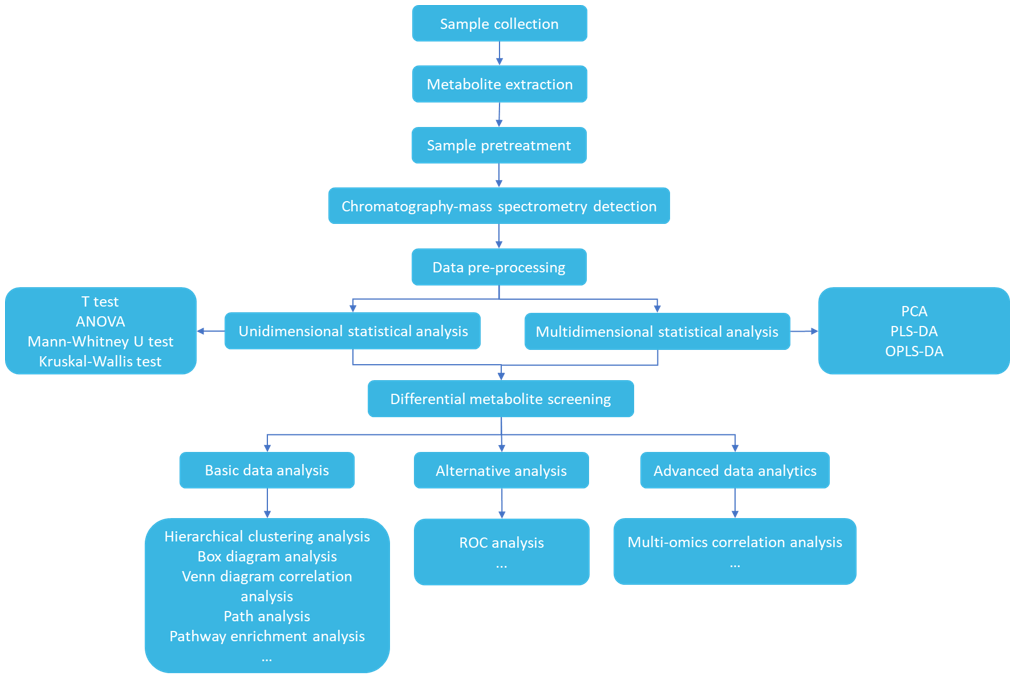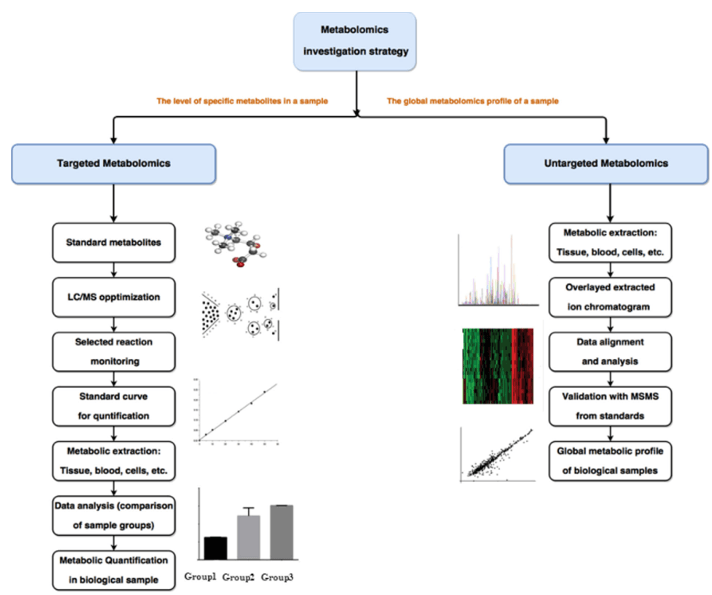Eye Diseases Metabolomics Service
The metabolome allows the analysis of the dynamics of endogenous metabolites of living organisms as a whole, including nucleic acids, proteins, lipids, and other small molecule metabolites. To distinguish the genome, transcriptome and proteome, metabolomics focuses on small molecule metabolites with mass < 1000, detecting, quantifying and cataloging endogenous metabolites in the organism and looking for patterns of change.
In eye, metabolomics has been used to study a variety of ocular diseases including glaucoma, age-related macular degeneration, diabetic retinopathy, cone cornea, refractive error, retinal detachment, uveitis, dry eye, and other ocular diseases.
Creative Proteomics offers metabolomics solutions for ocular diseases, providing qualitative and quantitative detection of all low molecular weight metabolites following pathophysiological stimulation or genetic modification of the body. By analyzing the patterns of endogenous metabolites, new biomarkers for early disease diagnosis can be identified, but also the pathogenesis of the disease can be explored.
Eye Diseases Metabolomics Solutions
01
Metabolomic analysis of dry eye disease (DES)
02
Metabolomic analysis of corneal disease
03
Metabolomic analysis of crystalline diseases
04
Metabolomic analysis of glaucoma
05
Metabolomic analysis of optic nerve diseases
Metabolomics Analysis Process for Eye Diseases

Technology Platform for Metabolomics Analysis
Multiple analytical platforms, including GC-MS, LC-MS, UPLC-MS. Thousands of metabolites can be screened from a single biological sample, providing a comprehensive approach for probing disease mechanisms.
| Chromatography | Mass Spectrometry |
GC (Q Exactive) (- mode MS)
HPLC: HILIC (+/- mode MS)
HPLC: RP C18 (+/-mode MS)
IC (- mode MS) | Q Exactive MS
Orbitrap Tribrid MS |
Sample Selection
Metabolomics samples are often taken from plasma, urine, body fluids or tissues, but plasma and urine only reflect the average combined status of the whole body, and localized body fluids and tissues are best selected for local conditions. For ophthalmic metabolomics studies, samples should be taken from local tissues and local fluids, such as tear fluid, atrial fluid, vitreous fluid, cornea, conjunctiva, and lens samples.
Creative Proteomics is a well-established partner in biopharmaceutical research and has extensive experience in metabolomics analysis. We provide solutions for eye diseases in the direction of metabolomics analysis, accelerating the exploration of new horizons in science. If you want to know more, please contact us. Looking forward to cooperating with you.
For Research Use Only. Not for use in diagnostic procedures.







